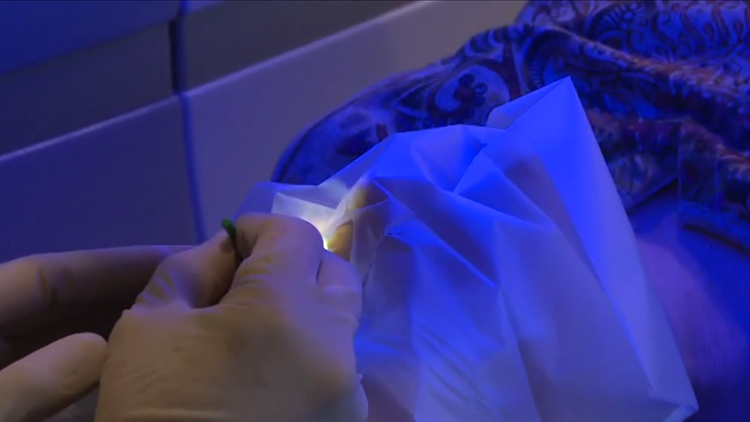It’s not uncommon for people who wear glasses to be on the lookout for visual freedom.
“I forgot my glasses one time and went out to a restaurant and couldn’t read a menu and had to have someone read the menu to me,” said Nancy Fowler. It was a big inconvenience. If I was downstairs my glasses were upstairs, or if I was upstairs they were downstairs.”
For millions of Americans, aging eyes and glasses are a part of getting older.
“This is a universal problem,” said ophthalmologist Dr. Jay Pepose. “Every single person age 45 and older has this problem because their lens hardens.”
“As an individual matures, so does the lens inside their eye,” said Dr. Jason Brinton, also an ophthalmologist. “It actually adds layers like the rings on a tree. It becomes more stiff and you lose that ability to focus back and forth.”
The FDA recently approved the Raindrop implant to help with age-related loss. The Raindrop implant is made mostly from water and works by reshaping the cornea to help the eye focus on close-up objects.
On Tuesday, Nancy Young was the first person to receive Raindrop surgery in St. Louis. As her husband Bill recorded every step on his cell phone camera, Dr. Brinton performed the procedure.
“The Raindrop inlay itself is thinner than a human hair and it’s 80 percent water, the size of a pinhead,” said Dr. Brinton.
The procedure took about 20 minutes.
“I could hear everything he was saying,” said Young. “I could see all the lights but there was no pain, no discomfort.”
A few hours later, about eight miles away, husband and wife Thomas and Kelly Muzzey waited for their back-to-back Raindrop procedures performed by Dr. Pepose, in the hope of no longer needing eyeglasses.
“I’ve been struggling with needing reading glasses and over time it’s become more and more of challenge to have the glasses with me when I need them,” said Thomas Muzzey, superintendent for Orchard Farm School District.
Muzzey was pleased with his 20 minute surgery.
“Almost relaxing. The procedure went extremely well, super fast, a lot less invasive than I anticipated.”
The Raindrop implant goes into one eye and for those patients who qualify, it can make it easier to read.
“In a sense, this is like wearing a multi-focal contact lens,” said Dr. Pepose. “You’re getting near and far at the same time and it only needs to be done in one eye and that seems to be enough to give good near vision.”
Because Raindrop implants are elective surgery, the procedure is not covered by insurance. The cost?
“Between $2200 and $6200 per eye depending on a number of circumstances,” said Dr. Brinton.



